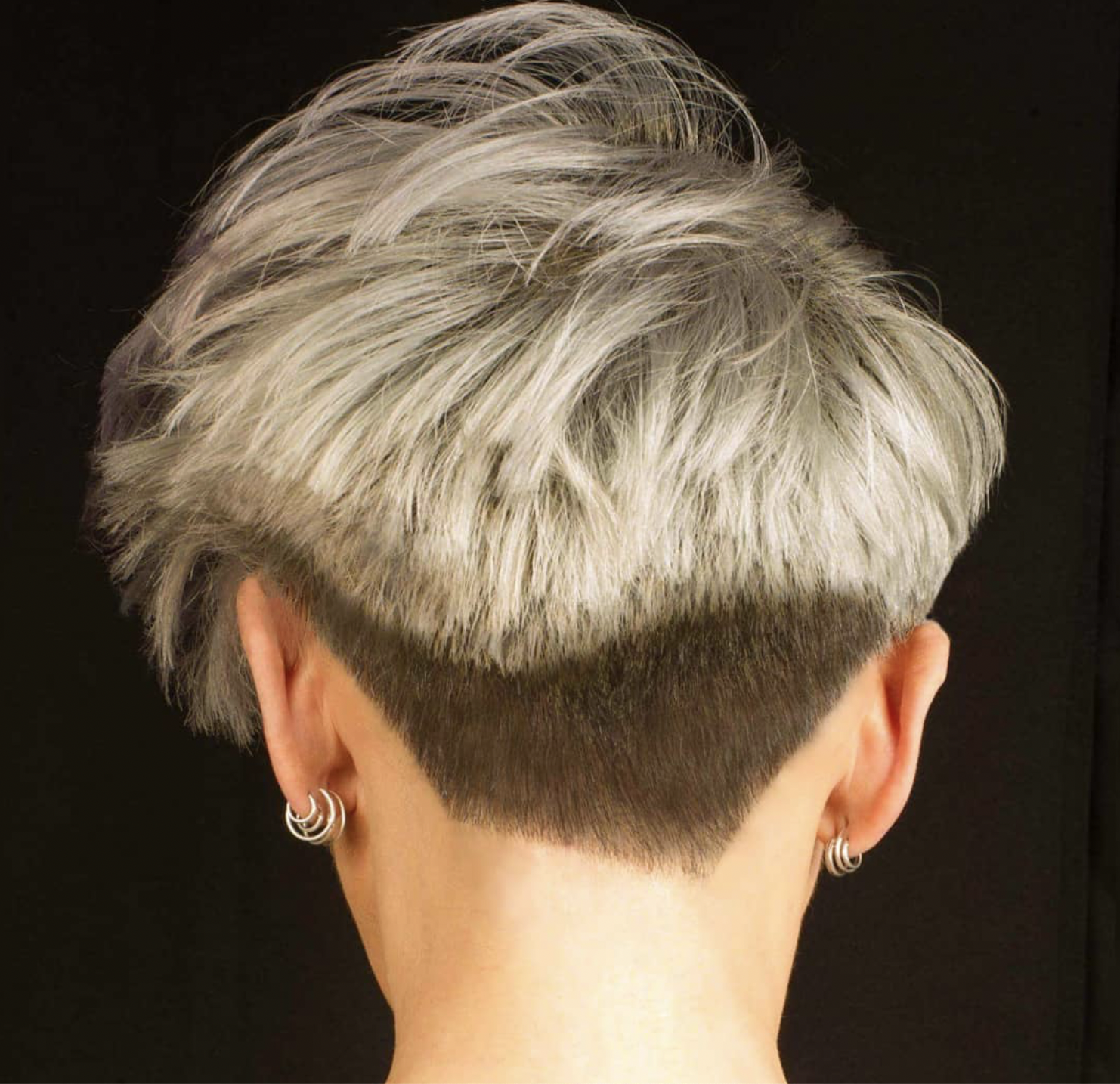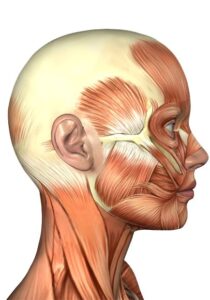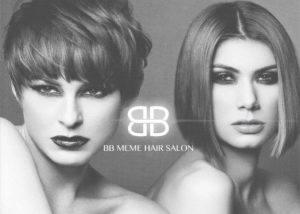
About the author : bbmemesalon@gmail.com
Hi everyone who came to read this blog written by Koji Kuninaga. I am a hair stylist / Beauty Salon Owner of BB Meme Salon/Photographer in San Diego US. In this blog, I will explain my idea of hair designing [Less distorted hair designing] using [Bone Structure and Hair Flow Corrective Method]
こんにちは皆さん、ブログにたどり着いた皆さん。私は2005年に渡米して、アメリカはサンディエゴの美容室BB Meme Salonを開業、現在二店舗のオーナであり、ヘアスタイリスト、そしてプロフォトグラファー日々活躍中です。このブログでは、私のヘアーデザインのアイデア「Less Distorted Hair Designing」を、「骨格構造と毛流れ補正法」を使って説明していきます
Hair flow and Muscle
The cutting technique for the same layer that I am about to propose forms the foundation for all my hairstyles, but it differs slightly from what Sassoon has in their short lineup. Therefore, I would like to first explain why I developed this technique and why I recommend it.
As I have already mentioned, the reason for the swirl at the top of the head is that the hair grows vertically from the roots, and the swirl helps to control this growth, allowing the hair to lie flat overall. This serves the important role of protecting the brain from shock. When it falls forward, it provides shade. On rainy days, the water that falls on the top of the head follows the flow of the hair and runs off, clearing the view. If necessary, it can even serve as a kind of wiper, preventing rainwater from dripping around the face. These are not merely coincidences but truly well-designed features, and I am always impressed by how well they work. However, why does the flow of hair vary from person to person, creating challenges for us as hairstylists? Despite these individual differences, can we identify any common traits?
I have been pondering this question for many years while working with people of all ages and offering various hairstyles. Through this experience, I realized that the most significant differences in hair flow occur at certain key areas. First, the starting point of the swirl at the top of the head: there are those whose hair begins with a single swirl and those whose hair starts with two swirls, leading to different flow patterns. Next, there are people with a strong indentation at the back of the head, where the hair flows irregularly from a deeply sunken, cliff-like shape. Others have a flow that is more widely spread and buoyant, similar to the shape of a beehive. Apart from these, there are also the nape and the area around the occipital bone, as well as the crown of the head.
When considering these features, apart from the bone structure, I noticed that as babies have more body fat, the flow of hair from the top of the head tends to follow a more uniform pattern. However, as children grow and body fat decreases while muscle development remains underdeveloped, the indentation areas become more pronounced, and the flow in these regions becomes more chaotic. Over time, as the muscles develop, the flow pattern changes and individual characteristics begin to emerge.
私がこれから提案するセムレイヤーのカット手順は私の全てのヘアースタイルの基礎となるものですが、サッスーンがそのショートラインナップで持っているものとは若干に違った内容となっています。従って、私がどうしてこの様な手順を作り出し、お薦めしているのか?という理由の説明をまず初めに解説したいと思います。
先に既に述べたように、頭頂部に渦巻きがある理由が髪が垂直に根元から生えていて、渦がそれを抑えながら髪全体で寝てくれる役割を果たしていて、人間の一番重要な脳を衝撃から守ってくれます。前に垂れれば日除け。そして、雨の日などは頭頂部に降り頻る水を髪の毛の流れに水分が沿って落ちて行くので、視界が開けます。は必要とあればひとかきで顔まわりに垂れてく雨水のワイパーがわりにもなります。これらは偶然の産物というには本当によく出来ているものだ、といつも感心させられます。ただ、では何故人それぞれに髪の流れの個人差が出て私たち美容師を困らせるのでしょうか?それらの異なる特徴とは別に共通して似通った特徴も見出せるのでしょうか? そんな事を長年考えながら老若男女様々な人々のヘアースタイルを提供する仕事に従事して来ました。それで気づいたのですが、毛流れに大きな違いを表している箇所はまずトップの渦の始まりの部分。ここが一つの渦巻きで始まっている方と二つの渦で展開される方の流れの違い。そして、その次に後頭部の凹みが強い方の落ち窪んだ崖のような形から生えている毛流れの不規則性。そして蜂の出た方の広がって浮の強い毛流れ。それ以外はネープとギッシュのコーナー。そして盆の窪。骨の形以外に焦点を当てて考えて見たところ、赤ん坊の時は体脂肪が多いので比較的頭頂部から来る流れがそのまま伝わっていますが、幼少期になると、体脂肪が減り、筋肉の発達が未熟な為か、窪みが多く、そのエリアの毛流れが乱れてしまいます。そして、その後は筋肉の発達の仕方と共に変化していって、個性が現れてくる様です。
Next, please pay attention to the way the muscles are distributed in the human head. There are no muscles around the top of the head, near the golden point, but from around the front of the ear, the muscles fan out connecting to the temples and corners of the mouth, while from behind the ear, they extend toward the chest and back muscles, arranged according to their respective functions. I speculate that this has a significant impact on the direction of the hair flow.
In the concept of “bone structure” in hair design, this includes the development of muscle tissue, and I have repeatedly considered how the tension caused by these muscles might influence the hair flow. What I realized is that the concentrated direction of the hair flow tends to align with the direction of the muscles. Many hairs grow away from the ear, pointing in a triangular shape towards the nape and the nape corners. With this assumption, I carefully observed the hairline of each client.
The crown of the head, or “bon-no-kubo” (the crown depression), is an area where muscle overlap is minimal, and the hair flow tends to settle in this area, resulting in higher hair density. However, the degree of this density varies depending on the dimensions and roundness of the skull, as well as the degree of muscle development. What I realized here is that if you cut using a long rectangular or flat partition, distortions inevitably occur between the upper and lower parts, resulting in significant differences in density, leaving unnecessary thickness. The cutting line also tends to veer more toward the layer, creating irregular movements in the cut, which may not align with the natural hair flow, and the intended effect of the cut might not be achieved.
With this in mind, I revisited the theory of the DIGIC CUT mentioned in Chapter 4, and, based on the grid system referenced in Chapter 2, I tried to improve the grid system outlined in Chapter 29, which is based on the head shape and rotation points described in Chapter 38. From this process, I was able to develop a new method of panel segmentation that effectively reduces distortion in a simple and efficient manner, using a new block division method and a simplified 2- to 3-sectioning technique. This new approach corrects the average hair flow and addresses frequent depressions and protrusions of the bone structure, allowing for a straightforward hair cutting process. The complex bone structure correction process I previously used can now be executed with simple steps.
Now, I would like to introduce the block segmentation lines that I propose in the next chapter, Chapter 48.
次に上の人頭の筋肉のつき方にご注目下さい。頭頂部ゴールデンポイント付近まで筋肉は存在せず、耳の前あたりから広角こめかみを繋ぐように、耳後ろからは胸部や背筋に向けて、筋肉が目的に応じて配置されています。それが毛流に大きく関わっていると推測されます。ヘアーデザインにおけるこの「骨格」という内容の中にはこれらの筋肉組織の発育内容も含まれ、その筋肉が起こす引っ張りもまた、毛流に影響するのではないかと、私は考察を繰り返しました。それで気づきを得たのは毛の流れの集中する方向性がどうやらこの筋肉の向かうライン上にある事に気づきました。多くの髪の毛が耳周りをよけ、ギッシュやネープコーナーにむけて三角にとんがりながら生えている。そのように仮定して、一人ひとりのお客様の生え際を観察したのです。盆の窪というのはこの筋肉の重なりの少なくなる部分で、その中に毛流れが落ちていくので、髪の毛の密度もやはり密になります。ただ、その程度の程は頭骨の寸法や丸み、そして筋肉の発達の度合いにより様々になっています。ただ、ここで気づきを得たのは、長四角や平面のパテーションで切り分けてしまうとどうしてもその上部と下部の間に歪みが生じ、密度に大きな差が出てしまうのと、余計な厚みが残ってしまう。切り口もレイヤー側により振れて、その部分にイレギュラーな動きが生じてしまったり、毛流れに必ずしも沿っておらず、そのカットラインの効果が得られていないのでは?と、考えたのです。それで、もう一度4章で述べたDIGIC CUT の理論に立ち返って、2章で参照したGrid システムを38章のヘッドシェイプの面構成とローテーションポイントをベースに、29章で参照したGrid システムを改良を試みて見ました。その考察結果をもとに全く新しいブロック分割法とシンプルな2から3セクセクショ二ングのパネル操作において歪みを簡単且つエフェクティブに削減出来る手順を開発する事に至りました。この私が新たに考案した新しいパネル分割方で平均的な毛流れに対しての補正と骨格の頻度の高い窪みや出っ張りに対応しながらヘアーカットの操作が単純に行えるように工夫されていて、私が今まで行って来た複雑な骨格補正プロセスを単純な手順で行える様になったのです。それでは早速この次の章48章からこの私が提案する分割線ブロックのご紹介をしたいと思います。
This Blog [Less Distorted Hair Designing] will be published every first of the month and 15th of the month.
このブログ[歪みの少ないヘアーデザイニング]は毎月一日と十五日の2回更新されます。
1727 University Ave. San Diego CA 92103
***************************************************************************************************** We are a full-service Salon San Diego where we provide you with haircutting, hair color, such as ombre balayage, and highlights. Also nail service with Reiki to boost your spiritual growth. Our Esthetician for Facials includes anti-aging, acne, cleansers, and more for you to achieve your own needs.
All this at BB Meme Salon, We provide you with knowledge for each service done to you, so you’ll leave the salon confident to look your best.
Parking In the back of the salon!
******************************************************************************************************
doctormarten, lowcut shoes, leather shoes, hairdesign, haircut, hair cut, hair design method, hairstructure, hairgrowthpatern correction, volume up hair ,weight down hair, hair shape, high reproducibility of hairstyles, good haircut, best hair salon in San Diego, best beauty salon in San Diego



![Less Distorted Hair Designing [10 Golden Triangle]](https://bbmemehairsalon.com/wp-content/uploads/2024/08/Screen-Shot-2024-09-02-at-10.34.47-AM-500x383.png)
